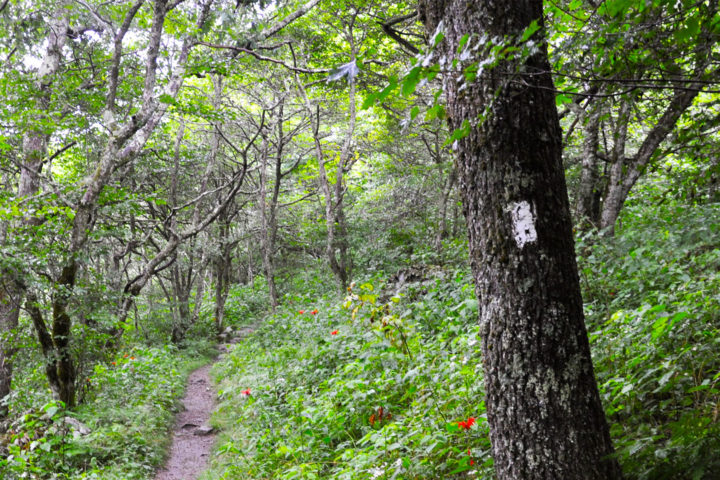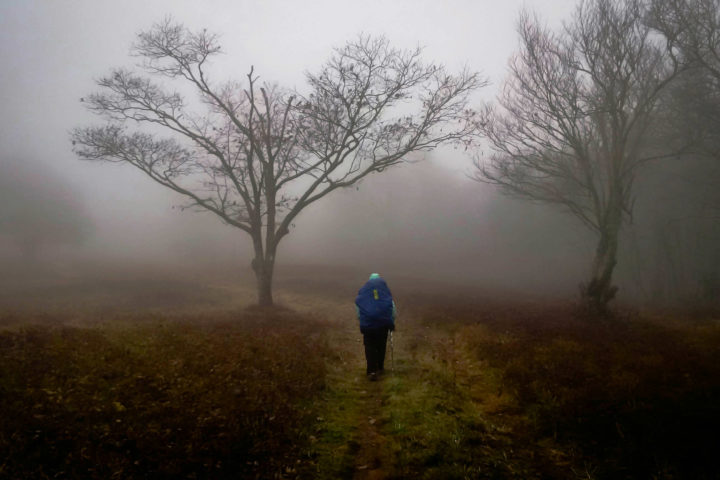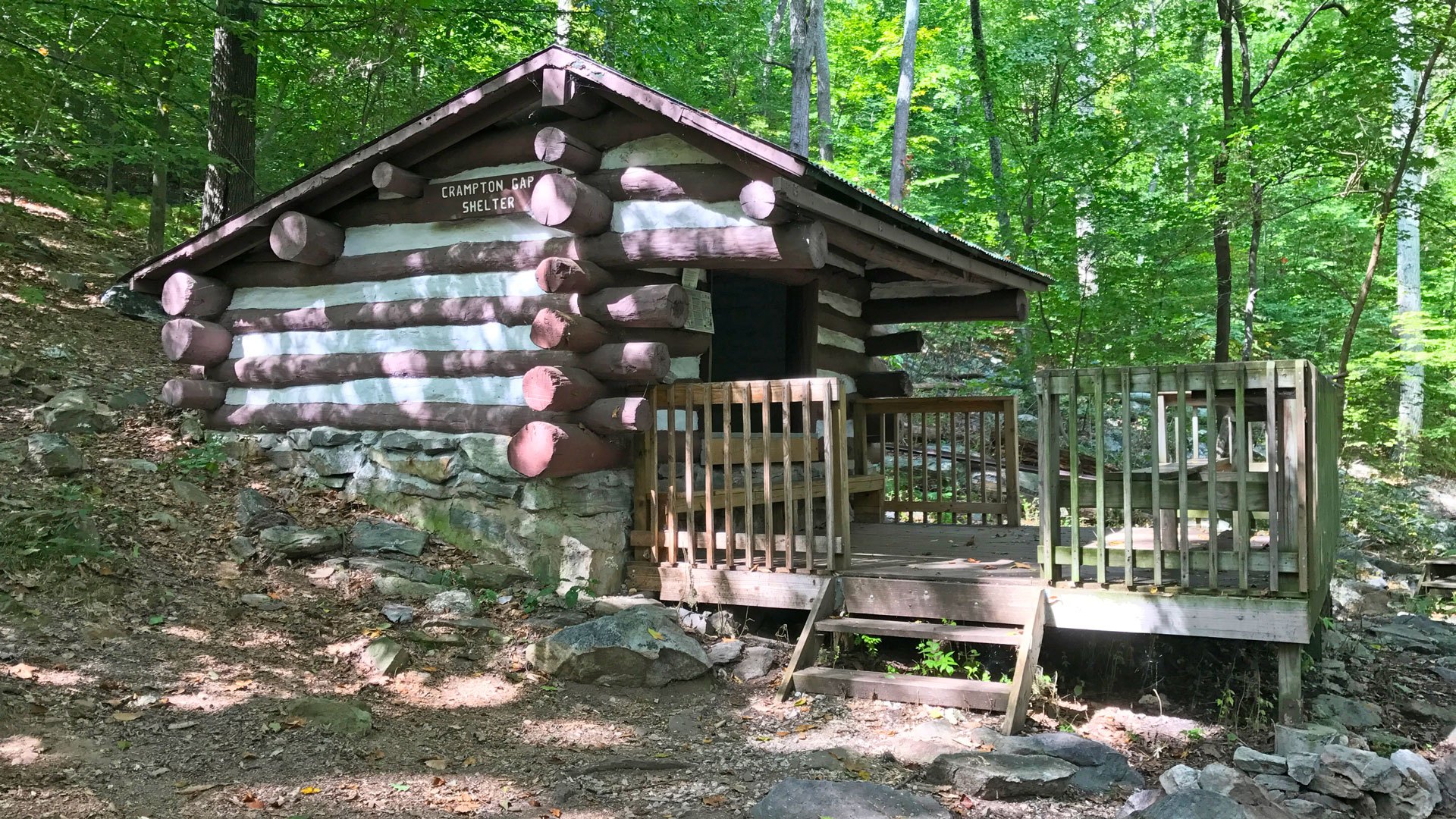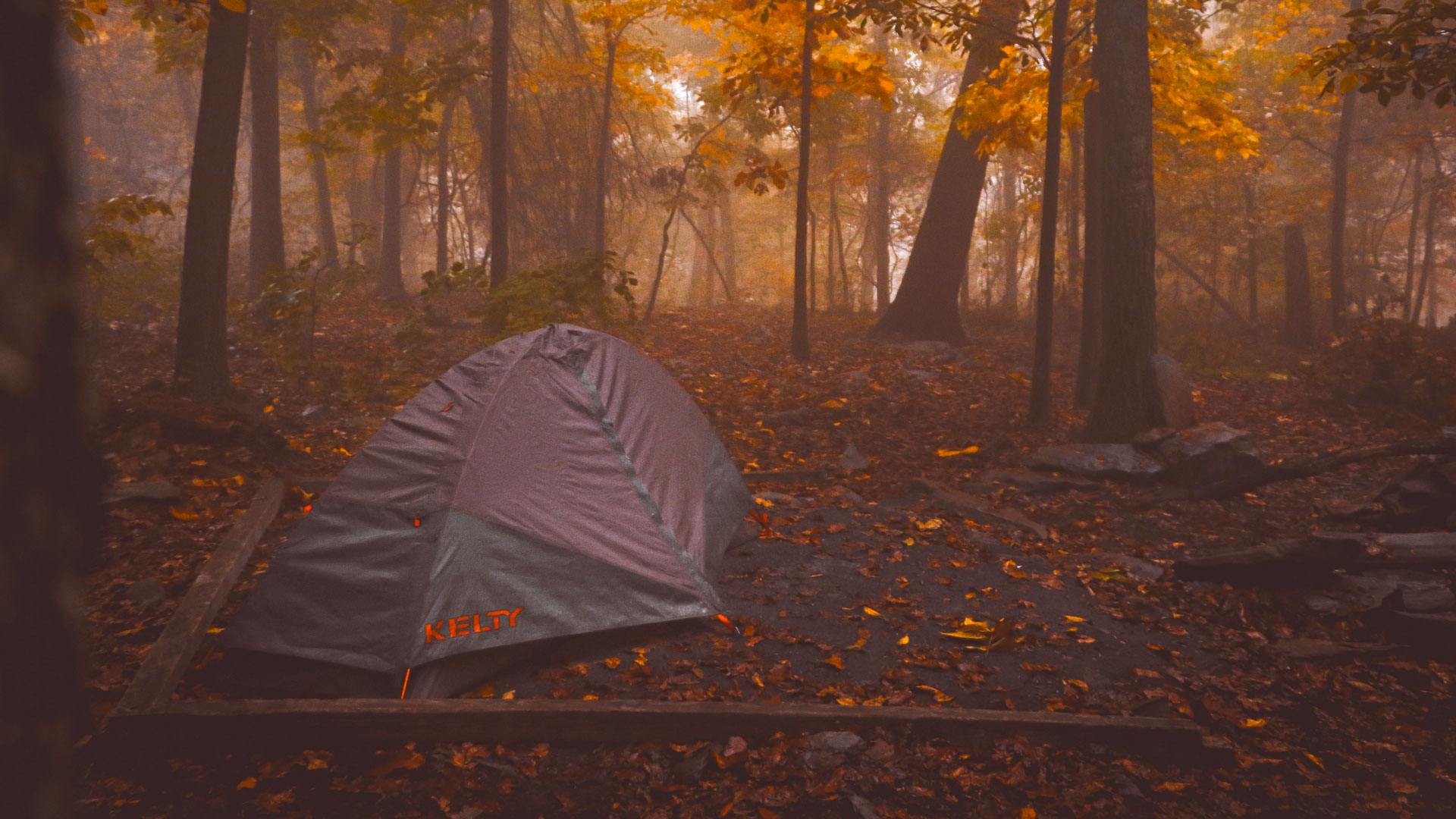By Laurie Potteiger
Camping on the A.T. During the Pandemic
February 19, 2021
(Updated 5/11/2021) During the COVID-19 pandemic, a tent is not just a tent on the Appalachian Trail (A.T.). A tent is a form of safety. With backpackers typically spending more time in camp than on the Trail, packing your own tent, tarp, hammock, or bivouac (bivvy) is one of the most important steps you can take in preventing the spread of COVID-19 on the Trail. The A.T.’s iconic shelters have been great places to interact and bond with fellow hikers at the end of each day, but now they are also shared air space where viruses can spread inadvertently. Carrying a personal shelter ensures you can effectively practice social distancing.
Here are some tips to help you prepare for camping on the A.T. to help you stay safe during the pandemic and reduce the spread of COVID-19.
Don’t Stay in Shelters
Currently, more than 60 A.T. shelters are closed due to COVID-19. Even where shelters are open, the Appalachian Trail Conservancy (ATC) advises against using them because of the difficulty of physical distancing in a semi-enclosed space.
For those tempted to use shelters when you’re tired, wet, or just lonely, here’s why you shouldn’t:
A.T. shelters (with a few exceptions) operate on a first-come, first-served basis with no fixed capacity. There is no way to know when a group of stragglers might come traipsing in after you’re happily snuggled in your sleeping bag for the night. This means you could have someone literally breathing in your face, potentially without a mask, for the next ten hours.
What options does that leave A.T. campers?
Camping in Designated Sites
These are areas that are already established with tenting sites, shelters, and other infrastructures built to handle frequent use by A.T. hikers.
How do you pick a spot in a designated campsite or shelter area?
There are three easy steps you can follow to select an ideal camping spot at a designated A.T. camping area:
- Look for a flat spot 200 feet away from water sources.
- Make sure it is at least six feet from other campers.
- Look up and around for hazard trees (those with dangling broken limbs or leaning, dead, diseased, or storm-damaged trees.)
Designated A.T. campsites almost always have a water source (that should be treated). Be prepared to not use any privies for now. The privy may be closed due to COVID-19 or it may not be maintained on a regular schedule. Be sure to carry a trowel and hygiene kit, and know how to dig a cathole.
Dispersed Camping
What is dispersed camping?
Dispersed camping means campers have the freedom to select the location of their campsite. On the A.T. it’s commonly called “stealth” camping. It requires more time, effort, and skill to find a suitable, low-impact spot and be able to leave no trace of where you camped, but it offers greater solitude.
Before considering dispersed camping, make sure it is allowed in the area you plan to camp.
Regulations are set by the local land-managing agency and vary up and down the A.T. Dispersed camping is allowed on roughly half of the Trail, with the largest area of land open to dispersed camping concentrated on U.S. Forest Service lands; specific guidance may differ in each forest. No dispersed camping is allowed on the A.T. in the states of Maryland, Connecticut, and Massachusetts. It’s a mix of different regulations in most other A.T. states, so check local agency or trail-maintaining club websites or A.T. guidebooks for information. The most comprehensive chart can be found on ATC’s Camping page.
Once you’ve figured out if it’s legal, how do you “stealth camp”?
Find a flat spot away from the Trail.
This is the hard part (unless you’re using a hammock). The A.T. is routed across mountainous terrain, where flat spots are sometimes hard to come by. A topographic map will show you where flatter terrain will be found, but you won’t know until you can see the terrain with your own eyes whether it will be free of rocks, choked with dense or fragile vegetation, or waterlogged and muddy. Look for a campsite well away from the Trail. The recommended or required distance varies — there are good reasons behind the recommendations, so do your research ahead of time. A minimum of 70 big steps from the A.T. is the general goal.
Allow plenty of time to find a suitable spot.
Start looking at least a couple of hours before sunset. You may sometimes need to walk farther than you’d think — sometimes a mile or more — before finding a suitable spot.
Camp 200 feet away from water sources.
Camp 70 big steps (200) feet from springs, streams, creeks, rivers, lakes, etc. and make sure you’re not blocking a wildlife path to the water. Another great option is to cook your meals and purify extra water when you encounter a water source, thus freeing yourself of the need to camp near water. That way you are less likely to attract wildlife to your site with cooking odors.
Look for hazard trees.
Explained above, but it can’t be said enough. Aim to camp at least two tree lengths from standing dead trees.
“Good campsites are found, not made.”
Find a spot that is on a durable surface (bare ground) where plants are not going to be damaged by setting up your tent. Don’t dig up plants or move soil, rocks, or logs. Look for durable surfaces such as grasses or bare ground that will be minimally impacted by your stay.
Camp safely, responsibly, and sustainably.
Forego the campfire; if you cook, rely on a backpacking stove instead and prepare your food 200 feet from where you sleep. Make sure you store your food and smellables properly — a bear-resistant canister offers the greatest protection from a variety of critters, but remember to have a strategy for locating it in the morning. Educate yourself about the “Bearmuda Triangle.” Have your trowel and hygiene kit at the ready to dig your cathole (200 feet from water and campsites). Plan your footsteps around camp in ways that minimize your impacts and Leave No Trace.
Don’t forget!
Wherever you camp on the A.T., remember to complete frequent tick checks, always have your mask at the ready, and register your hike at atcamp.org.
The ATC hopes that each hiker has a safe and successful journey on the A.T. Planning and preparation go a long way to ensure you keep yourself, others, and the Trail safe and healthy!
UPDATE: May 11, 2021
With a widely available and distributed COVID-19 vaccine in the United States and the latest information from the Centers for Disease Control and Prevention (CDC), the ATC has updated its guidance for long-distance hiking and visitor centers. Long-distance hiking on the A.T. is now considered to be a safer activity, especially for those who have received one of the approved COVID-19 vaccines. The ATC 2,000-Miler Recognition Program has resumed, and A.T. 2021 hangtags will be distributed when designated A.T. visitor centers reopen. Some COVID-19 safety recommendations are still in place. For more information, visit appalachiantrail.org/covid-19.
Discover More

Stay Safe on the A.T.
COVID-19 Latest Updates
Be aware of safety guidelines, local restrictions and closures, and the latest information on how COVID-19 could affect your time on the A.T.

Plan and Prepare
Hiker Resource Library
A collection of resources for hikers to stay safe, healthy, and responsible on the Appalachian Trail.

Official Blog
A Year Like No Other
With COVID-19 continuing to grip the country, planning and preparing for the challenges of an A.T. thru-hike in 2021 are essential.








